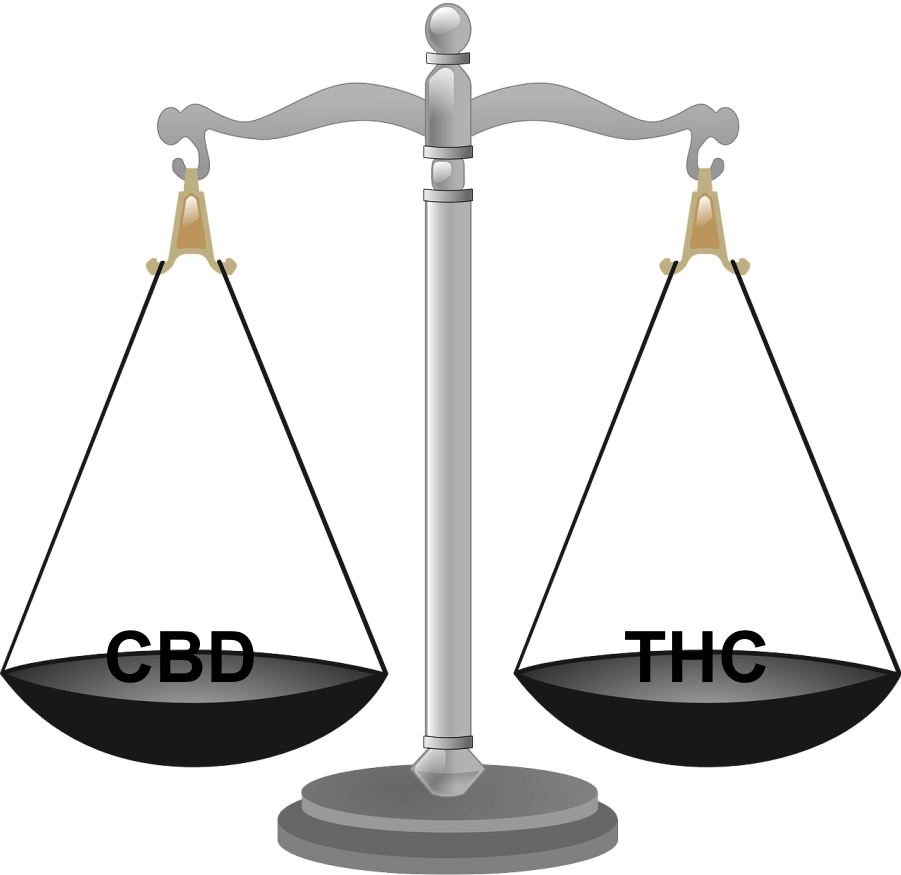This question is asked a lot and rightly so. Although CBD and THC are similar in some ways, they are also very different.

Similarities of CBD and THC
Both come from the cannabis plant and consist of the same molecular structure, both are similar to our body’s endocannabinoid system and react to CB1 and CB2 receptors, and both aid in the treatment of medical conditions.
Differences in CBD and THC
Despite these similarities, there are noticeable differences.
The cannabis plant is made up of three strains for human consumption – Indica, Sativa, and Ruderalis, with the main two being Indica and Sativa.
The Indica, when used for medical marijuana, has a higher ratio of CBD to THC and the Sativa plant has a higher ratio of THC to CBD. The plants are different: The Indica is shorter and bushier with wide leaves while the Sativa is tall and thin, with narrow leaves and more fibre.

Their growing conditions are different as well. The Indica grows faster with a higher yield while the Sativa takes longer to grow and mature and requires more light.
The third strain, the Ruderalis which we do not talk about as much, is lower in THC than either of the Sativa or Indica plants and because of this, we do not use it as much for recreational use. Its short stature limits its production of hemp. The plants have thin, fibrous stems with little branching and large leaves. It matures much quicker than the other two – 5 to 7 weeks from seed.
It was traditionally used in Russian and Mongolian folk medicine for treating depression. Today, it combines with Bedrocan strains (Sativa dominant strain) to produce the Bediol strain (a combination of THC and CBD) for patients with medical prescriptions. Because of its higher concentration of CBD, Ruderalis treats epilepsy, cancer, sclerosis, and loss of appetite.
CBD vs THC
The fundamental difference, however, is that CBD will not make you high while THC will. CBD binds more with the CB2 receptors producing a relaxed state while THC binds more with the CB1 receptors producing the ‘high’ or euphoric state.
Benefits of CBD and THC
While both CBD and THC help with certain conditions, it comes down to what you wish to experience. If you like that feeling of being high, then products containing THC are what you want. However, many people want pain relief but do not want to experience this high or euphoric state, thus CBD products with little to no THC are better for them.
Some various conditions that CBD and THC are used to manage or aid in are:
CBD
Seizures associated with Epilepsy*
Pain relief
Anxiety and stress
Depression
Mental disorders
As an anti-inflammatory
Increasing appetite
Aiding in smoking or drug withdrawals
Relief from nausea
Migraine headaches
Skin conditions such as acne
Type 1 diabetes
*The FDA (Food and Drug Administration) approved in June 2018 cannabidiol (Epidiolex is an oral solution) to treat two difficult forms of epilepsy—Dravet’s Syndrome and Lennox-Gastaut Syndrome – for patients aged 2 and over. It was the first drug containing a purified marijuana derivative that the FDA approved.
THC
Chronic pain
Glaucoma
Sleep disorders
Eating disorders
Nausea from cancer treatments
Muscle spasms caused by MS (Multiple Sclerosis)
Crohn’s disease
Muscle relaxant from tremors in Parkinson’s Disease
Irritable Bowel Syndrome (IBS)
PTSD (Post-traumatic Stress Disorder)
Side Effects of CBD and THC
CBD
Drowsiness
Dry mouth
Low blood pressure
Prescription drug interference
Diarrhea
Nausea
Changes in appetite and weight
THC
Dry mouth
Dry, red eyes
Increase in appetite/munchies
Sleepiness
Memory Impairment
Anxiety/paranoia
Euphoria (high)
How to Ingest or Use CBD and THC
The most common ways to ingest or use both CBD and THC are in the following ways:
Tinctures/oils
Pills/capsules
Inhalation (vaping)
Isolates
Topical Creams and salves
Edibles/drinks

Since 1994, I have suffered on and off with chronic pain as a result of degenerative joint changes in both my hips and knees. After refusing traditional pharmaceutical prescriptions as I felt they were invasive to my body, I started researching CBD products, specifically oils and medical marijuana products. I am happy to say that I have been taking them for over 3 years with tremendous success!
